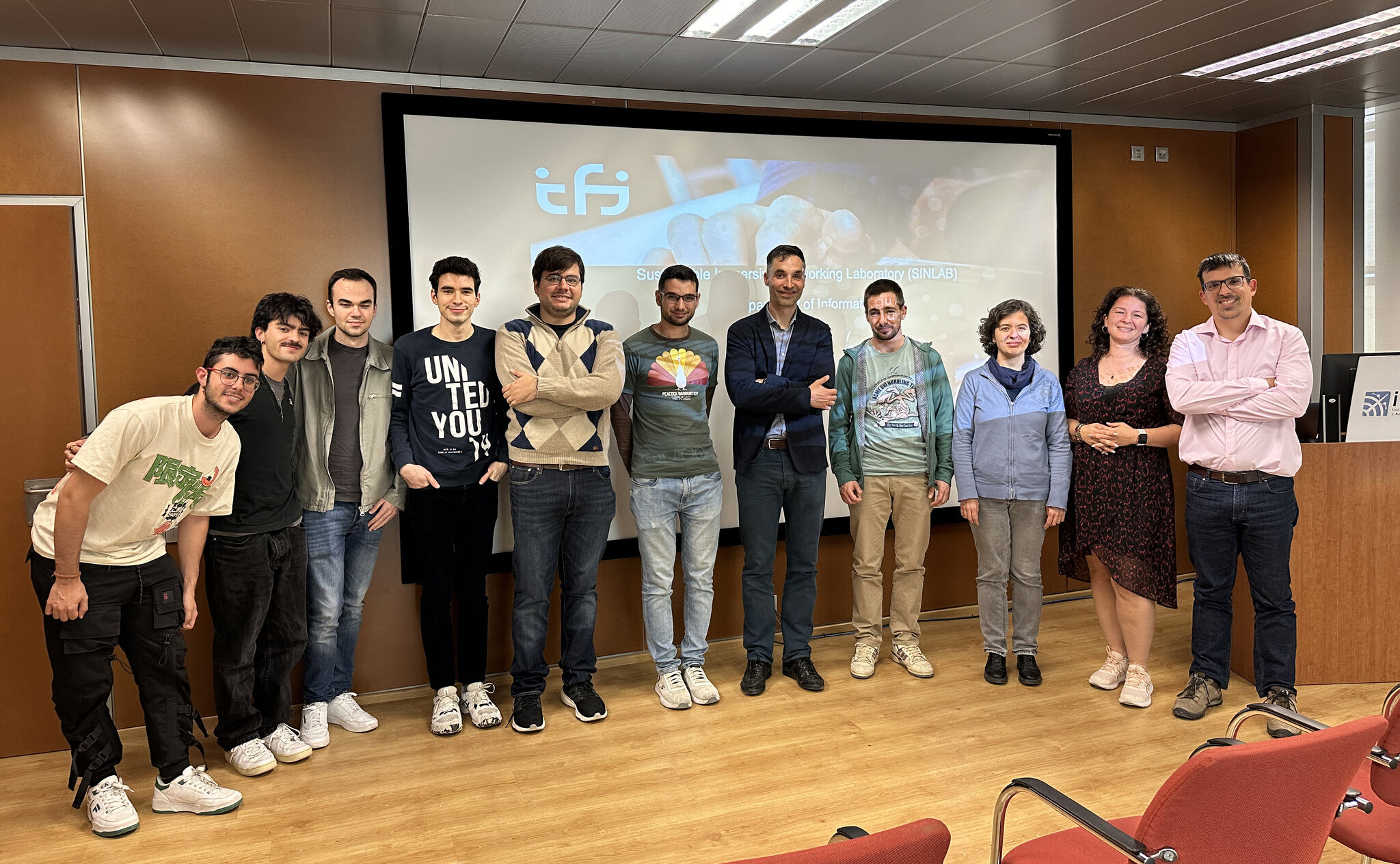Professor Ozgu Allay from the University of Oslo (Norway) visited ITEAM to give a scientific talk entitled “Multimodal Interactions in the eXtended Reality Era”. The talk is part of the collaboration between the Universitat Politècnica de València and the University of Oslo under the European project IMAGINE-B5G.
Professor Allay presented the activities of the Sustainable Immersive Networking Laboratory (SINLAB) at the University of Oslo, highlighting two recent research activities.
“Experiencing Rotation and Curvature Gain for Redirected Walking in Virtual Reality”, E. M. Kjenstad, H. K. Ringsby, R. J. Gaeb, C. Erdem, K. Kousias, O. Alay, and C. Griwodz, Proceedings of the ACM Workshop on Immersive Mixed and Virtual Environment Systems (MMVE ’23).
The target of the first research activity is to explore the translation of the natural walking motion from the real world into the virtual world. Over the recent years, interactions with the virtual environments have been studied intensely, but very frequently, such interactions are focused on stationary users and free movement in the virtual world tends to be achieved by controller input, which creates a huge hurdle to enter and act in it in a natural manner. Directly translating walking in the real world to walking in the virtual world is arguably the most natural approach, however, the limited size of available real-world space impose limits on it. Redirected Walking (RW) manipulates the human senses and allows users to interact with the virtual world with the most natural form of movement. In this work, we investigate to which extent RW is achievable without being noticed by the users, and how free body motion contributes to the feeling of immersion and naturalness while acting in and through virtual world.
“How do Users Experience Asynchrony between Visual and Haptic Information?”, S. Zoltanski, C. Erdem, K. Kousias, O. Alay, C. Griwodz, in the Proceedings of ACM Multimedia Systems Conference (MMSys), 2024.
The target of the second research activity is to explore the importance between visual and haptic information in networked interactions. In such interactions, latency plays a significant role in determining responsiveness. Proactively managing latency through predictive measures and compensatory strategies is fundamental for the success of interactive applications, ensuring a more immersive and responsive user experience. This work takes a step in this direction by conducting a user study to investigate the importance of asynchrony between visual and haptic information. By introducing delay in a simple first-person dodging game, we study how levels of asynchrony are perceived by humans and what are the perceptual thresholds that humans can tolerate for networked interaction.

